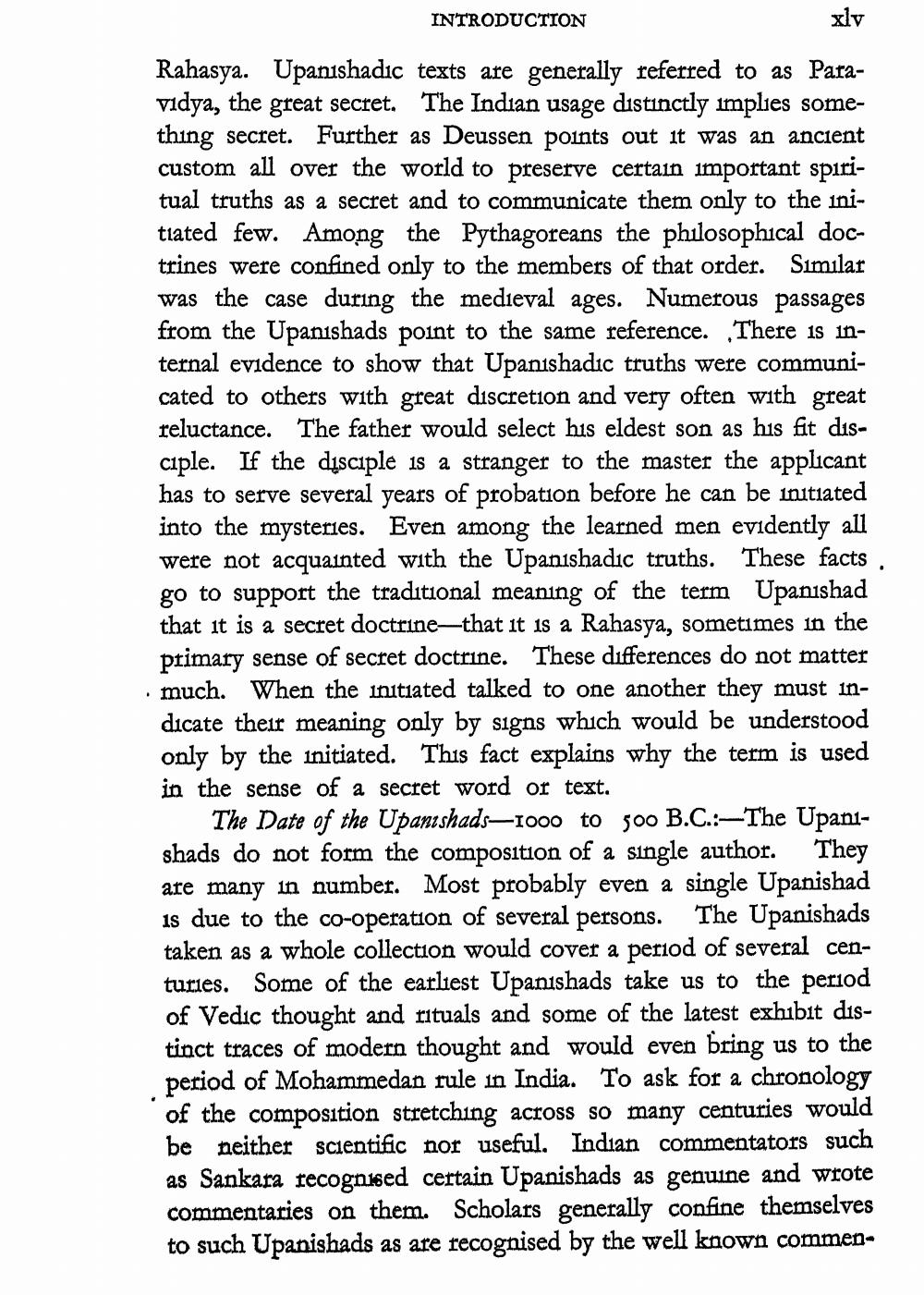________________
xlv
Rahasya. Upanishadic texts are generally referred to as Paravidya, the great secret. The Indian usage distinctly implies something secret. Further as Deussen points out it was an ancient custom all over the world to preserve certain important spiritual truths as a secret and to communicate them only to the initiated few. Among the Pythagoreans the philosophical doctrines were confined only to the members of that order. Similar was the case during the medieval ages. Numerous passages from the Upanishads point to the same reference. There is internal evidence to show that Upanishadic truths were communicated to others with great discretion and very often with great reluctance. The father would select his eldest son as his fit disciple. If the disciple is a stranger to the master the applicant has to serve several years of probation before he can be initiated into the mysteries. Even among the learned men evidently all were not acquainted with the Upanishadic truths. These facts. go to support the traditional meaning of the term Upanishad that it is a secret doctrine-that it is a Rahasya, sometimes in the primary sense of secret doctrine. These differences do not matter much. When the initiated talked to one another they must indicate their meaning only by signs which would be understood only by the initiated. This fact explains why the term is used in the sense of a secret word or text.
INTRODUCTION
The Date of the Upanishads-1000 to 500 B.C.:-The Upanishads do not form the composition of a single author. They are many in number. Most probably even a single Upanishad is due to the co-operation of several persons. The Upanishads taken as a whole collection would cover a period of several centuries. Some of the earliest Upanishads take us to the period of Vedic thought and rituals and some of the latest exhibit distinct traces of modern thought and would even bring us to the period of Mohammedan rule in India. To ask for a chronology of the composition stretching across so many centuries would be neither scientific nor useful. Indian commentators such as Sankara recognised certain Upanishads as genuine and wrote commentaries on them. Scholars generally confine themselves to such Upanishads as are recognised by the well known commen




